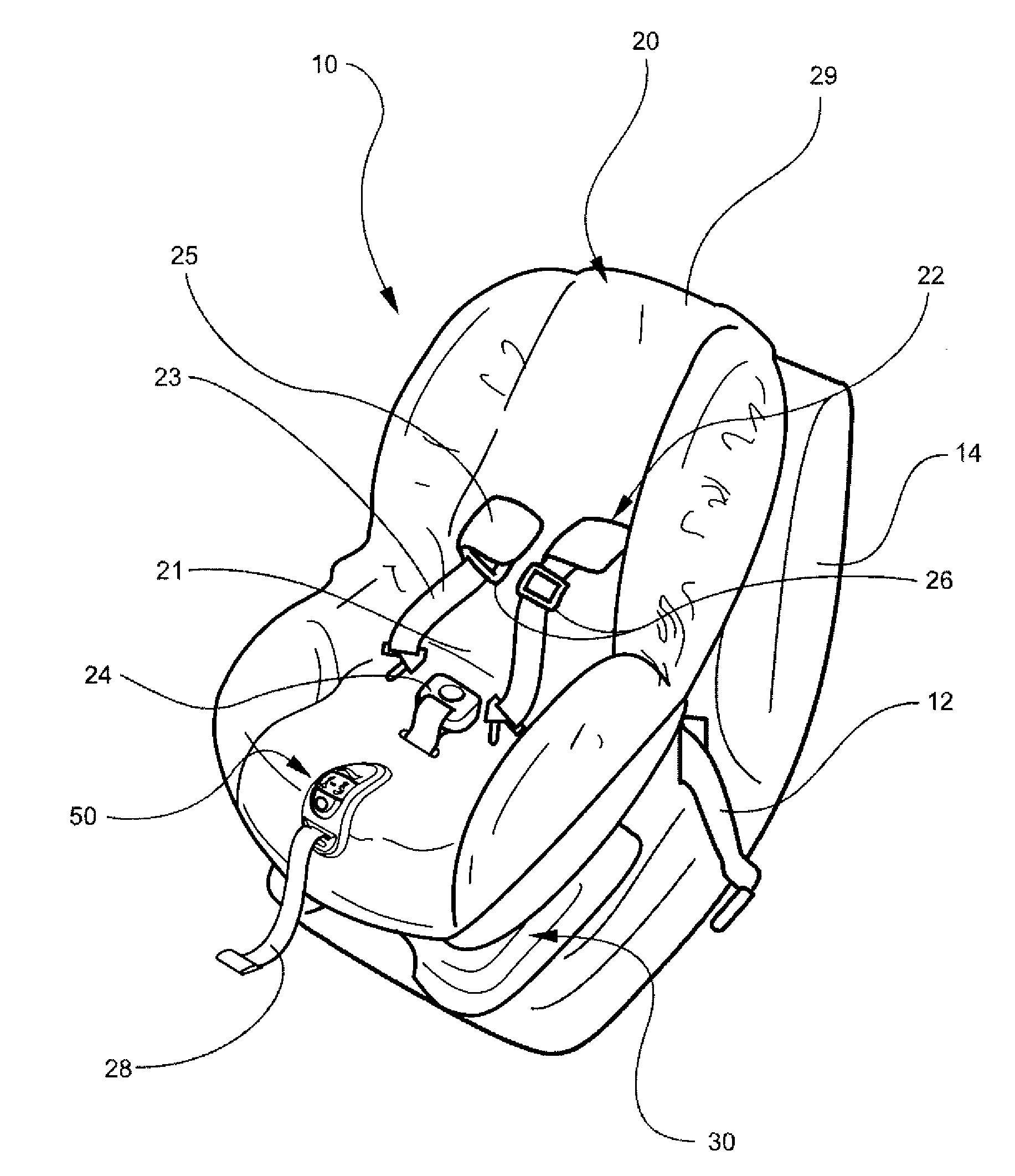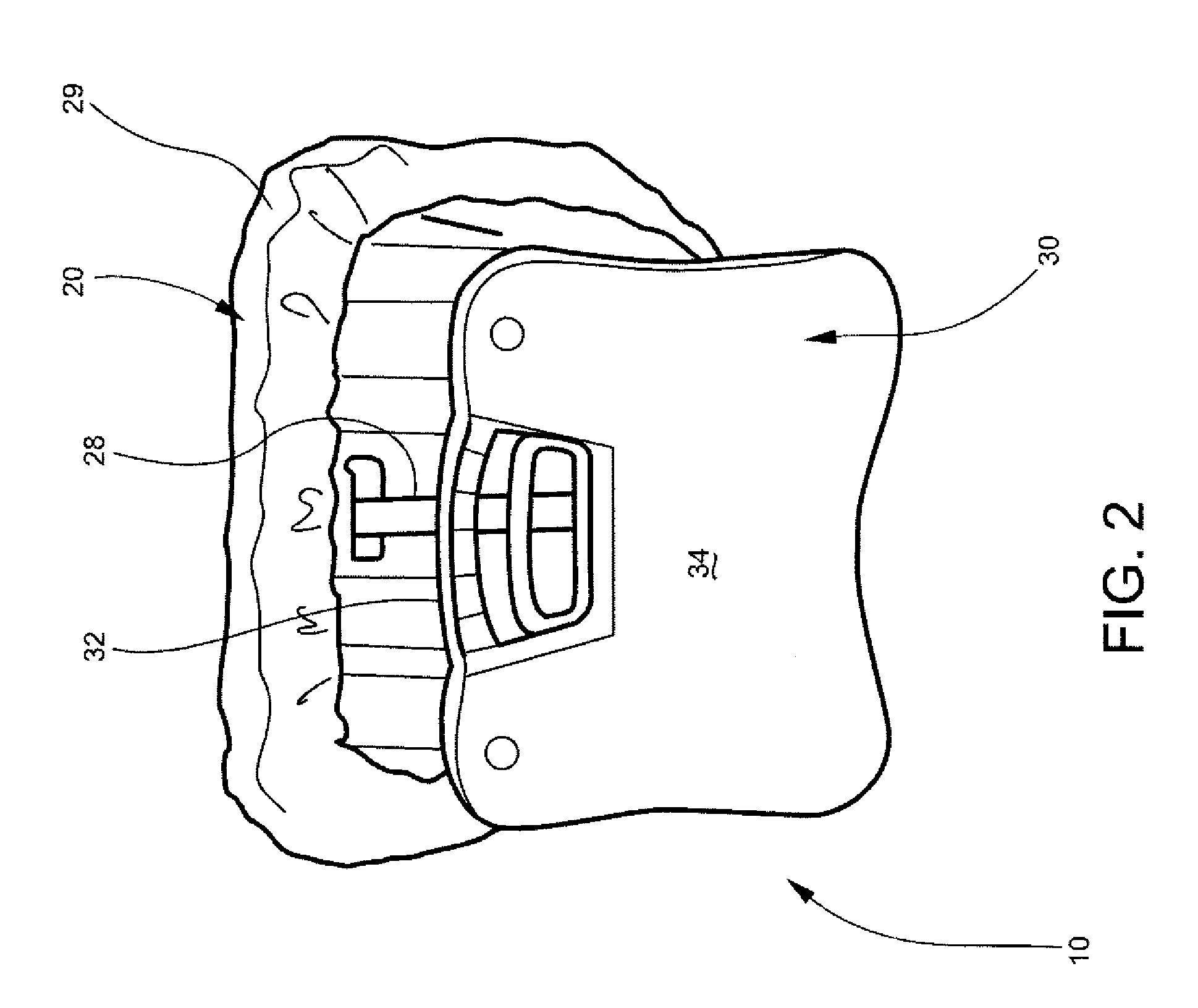Child restraint system including tension sensor and status indicator
a technology of which is applied in the direction of chairs, pedestrian/occupant safety arrangements, vehicular safety arrangments, etc., can solve the problems of inability to reliably and reliably operate, complex tension sensor and status indicator, and inability to meet the needs of children, so as to prevent the weight of the child from interfering
- Summary
- Abstract
- Description
- Claims
- Application Information
AI Technical Summary
Benefits of technology
Problems solved by technology
Method used
Image
Examples
Embodiment Construction
[0029]Referring to the drawings wherein identical reference numerals denote like elements throughout the various views, a child restraint system, commonly referred to as a child car seat, child safety seat, or child seat, is shown in FIG. 1 and FIG. 2. The child restraint system, indicated generally at 10, is shown in FIG. 1 secured by a vehicle seat belt 12 onto a seat 14 of the type typically installed in a vehicle (not shown), such as an automobile, bus, train, airplane, etc. As shown and described herein, the forward-facing child seat 10 comprises a seat portion 20 mounted on a base 30 in a known manner. However, the present invention is equally applicable to a rear-facing child seat comprising a removable carrier portion mounted on a base of the type commonly used to transport and safely restrain an infant or small child weighing no more than 33 pounds (15 kg). Preferably, the base 30 and the seat portion 20 (or carrier portion) are molded from a relatively rigid, hard plastic ...
PUM
 Login to View More
Login to View More Abstract
Description
Claims
Application Information
 Login to View More
Login to View More - R&D
- Intellectual Property
- Life Sciences
- Materials
- Tech Scout
- Unparalleled Data Quality
- Higher Quality Content
- 60% Fewer Hallucinations
Browse by: Latest US Patents, China's latest patents, Technical Efficacy Thesaurus, Application Domain, Technology Topic, Popular Technical Reports.
© 2025 PatSnap. All rights reserved.Legal|Privacy policy|Modern Slavery Act Transparency Statement|Sitemap|About US| Contact US: help@patsnap.com



